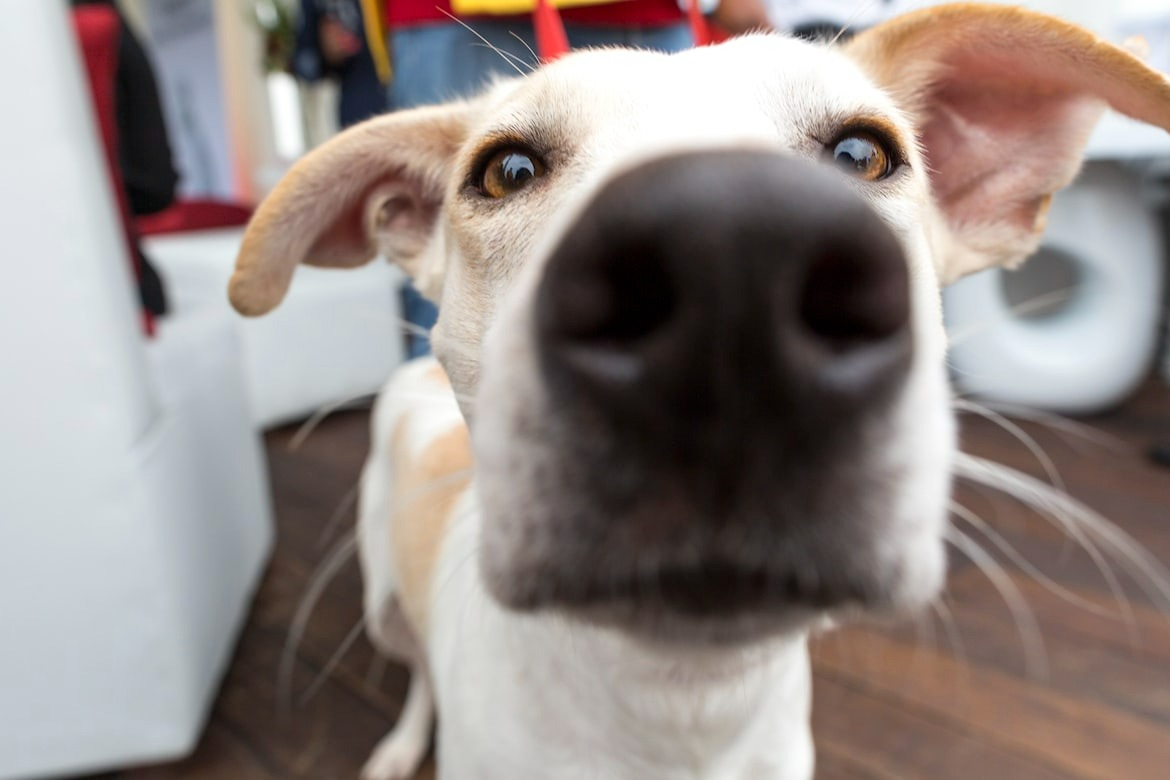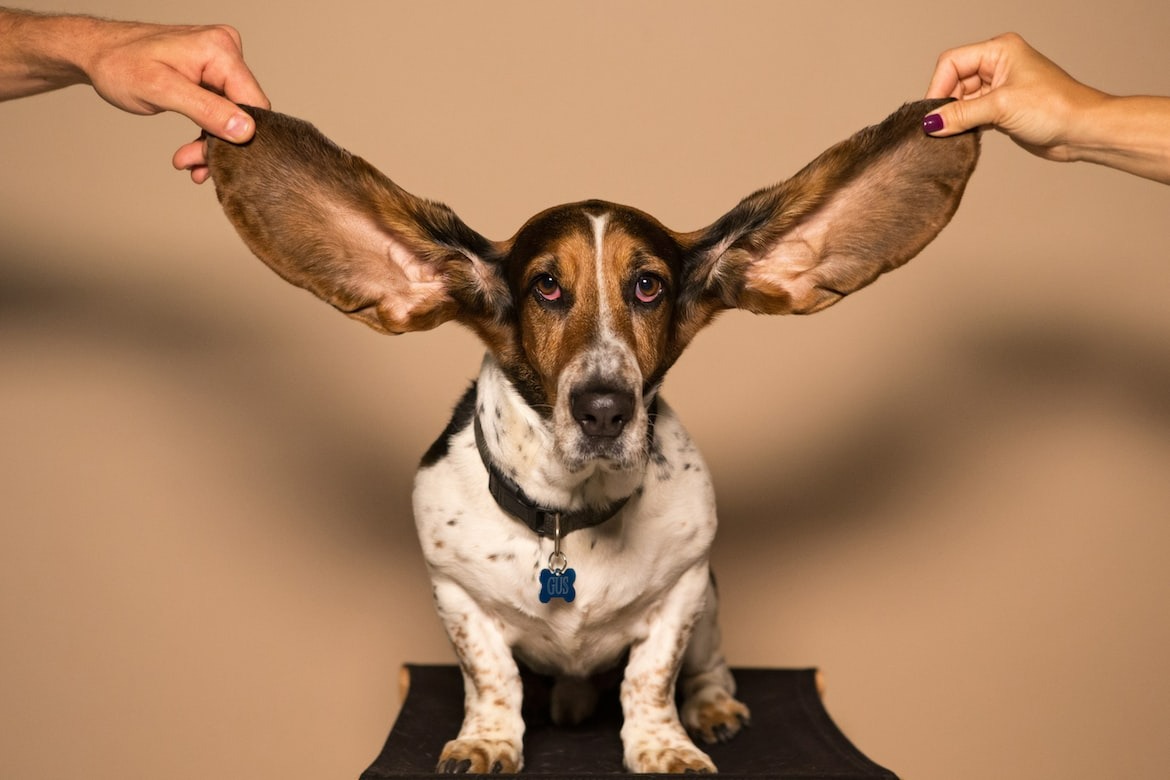
Dogs are magnificent creatures - there is no question about it. We must have done something right because they are nature’s greatest gift to us. Dogs are intelligent, versatile, greatly skilled, fun, passionate, and full of life. They’re our cherished fur-babies and our best friends through thick and thin. They act as our doctors and guides, and they are always there to entertain us when we need it. We love them for their endearing behavior, funny stunts, and mischief. We are grateful for their ever-lasting, unconditional love.
Apart from their stunning looks and big puppy eyes, that they use to soften our knees, dogs have many more talents, abilities, and canine powers that most people aren’t aware of.
Read on and let our canine friends impress you with their awesomeness.
Table of Contents
Super Nose

The biggest canine superpower dogs have is their sense of smell. Dogs can smell at least 40 times better than humans can. Studies show that the brain section responsible for this sense is 40 times bigger in dogs than it is in humans. Thanks to their super noses, dogs are trained to detect mold, substances, explosives, termites, and even disease. In the past few years, dogs have thrilled scientists with their canine ability to smell changes in blood pressure, elevated or low blood sugar levels, detect epileptic seizures before they happen, and even detect cancer. Dogs can also trace theirs and other scents for miles.
Fun fact - Dogs can smell fear, it’s not a myth. They can smell emotions like excitement, anxiety, sadness, anger, and enthusiasm through our levels of perspiration.
6th and 7th Sense

Dogs can sense time. Better than us in this aspect too, dogs can tell time without looking at a watch, at the stars, or the moon’s or sun’s position. They can tell the difference between one hour and three, four, or five hours.
Dogs can sense impending disasters. A study conducted soon after a major Japanese earthquake confirms that some dogs can sense changes in the atmosphere before a disaster strikes.
Over 1,000 Japanese dog owners were asked if their dogs displayed any type of irregular behavior before the earthquake hit. Up to 30% of the dog owners reported that their dogs appeared agitated, nervous, and anxious, with some even trying to escape the house or apartment. Similar studies have reported that dogs can sense approaching floods, volcanic eruptions, wildfires, and tsunamis.
Fun fact - Your family dog learns your schedule and knows when you are about to leave, when it’s time for you to come home, how long you will be gone, and how much time is left before you return. Dogs know when it’s time to grab the leash and wait by the door for their daily walk, and when it’s kibble time.
Dogs Feel Everything We Feel

Did you know that your dog gets jealous when you cuddle, pet, or praise another dog? It’s true; dogs can feel jealousy, lovey-dovey butterflies, happiness, and sadness. They can get bored or excited, and also have feelings of loneliness, abandonment, confidence, and enthusiasm.
Fun fact - Guilt is not in their vocabulary. Although they act as if they know they’ve done something wrong, dogs don’t actually feel guilt rather than react to a certain tone of voice and physical approach.
Super Hearing

Dogs have 18 ear muscles that they use to twitch their ears up, down, and from side to side for better hearing. They can hear high and low frequencies that we can’t pick up on, and they can hear from a distance four times greater than we can.
Fun fact - We can hear a coin drop from 10 feet away, our super dogs can hear it from 40 feet away.
Dogs & Their “Doggles”
In line with the myth that dogs have night vision and can see fine in pitch-black darkness, studies have shown that dogs see better in a low-light setting. Dogs can see better and much further than we can at night.
Another common myth about dogs is that they don’t see colors but rather shades of white and black. In truth, dogs can see shades of yellow, blue, gray, brown, and many more except for red and green.
Fun fact – Dogs have three eyelids that help keep their eyes moist, shiny, and hydrated, and protect them from any kind of eye infection.
Puppy Dreams
Puppies, and adult dogs, dream just like we do. Studies show that their REM sleep patterns are very similar to humans. It is also said that small dogs dream more than bigger dogs and that their dreams are shorter and more frequent. You might see your dog run, twitch, bark, whine, or even growl while dreaming and it’s absolutely normal (and fun to watch).
More often than not, dogs sleep in a curled position. The reason behind this is that they retained their primal instincts from back when they were living in the wild, and often sleep curled to protect their vital organs in case of a sneak attack. Dogs also sleep in a curled position to keep warm.
Fun fact – If you’ve ever wondered what your dog dreams about, the short answer is most likely YOU. Dogs dream of their surroundings and familiar faces. Their dreams include cuddling you and other family members, playing with their toys, chasing their fur siblings, and even barking at neighbors.
Scroll down to see FAQs about interesting dog facts!
What To Read Next
7 Best Apartment Dog Breeds
10 Very Quick And Cool Dog Facts
Frequently Asked Questions
How good is a dog's sense of smell? Dogs have an extraordinary sense of smell. They can smell up to 100,000 times better than humans. This incredible ability is why they're often used in search and rescue missions, and even in medical fields for detecting diseases like cancer.
How many words can a dog understand? Dogs have a considerable vocabulary for an animal. They can understand between 150 to 250 words on average, which is about the same as a two-year-old child. Some particularly intelligent breeds can even have a vocabulary of up to 1,000 words.
Can dogs read human emotions? Yes, dogs are capable of reading human emotions. They can pick up on subtle changes in our voice, body language, and scent to understand our feelings and respond accordingly.
Do dogs dream like humans? Yes, dogs do dream just like humans. Studies have shown that dogs enter a deep sleep stage where they can have dreams. The frequency of dreams can depend on their size and age, with smaller breeds and puppies typically dreaming more often than larger breeds.
What are some health benefits dogs can provide? Dogs can provide numerous health benefits. They can lower blood pressure, cholesterol levels, and reduce the risk of asthma and allergies. They're also known for their ability to help humans manage stress and depression, and can even alert us to health dangers like blood sugar crashes in diabetics, seizures, and other types of infections.




